With the rapid advancement of artificial intelligence, the idea of humanoid robots working alongside humans in factories, hospitals or even inside the home no longer seems like science fiction. Once seen as impractical due to technical and cost barriers, the concept is gaining momentum thanks to improvements in machine learning, computer vision and robotics hardware. Instead of relying solely on pre-programmed routines, humanoids can draw from large language models and multimodal AI systems to process information more effectively — allowing them to adapt to unstructured environments and even reason through multi-step tasks.
What Are Humanoid Robots?
Humanoid robots are robots that resemble and act like humans. Typically engineered to imitate authentic human expressions, interactions and movements, these robots are often outfitted with an array of cameras, sensors and AI and machine learning technologies.
As a result, major tech players are racing to design and roll out robots that can navigate real-world conditions, learn from human feedback and perform tasks once considered to be too complex for automation. Even OpenAI — which stepped back from robotics research in 2021 — appears to be reentering the field, signaling how central humanoid robots may become in the next chapter of AI development.
How Are Humanoid Robots Being Used Today?
While more humanoid robots are being introduced into the world and making a positive impact in industries like logistics, manufacturing, healthcare and hospitality, their use is still limited, and development costs are high.
That said, the sector is expected to grow. The humanoid robot market was valued at $2.03 billion in 2024 and is predicted to increase to more than $13 billion by 2029, according to research firm MarketsandMarkets. Fueling that growth and demand will be advanced humanoid robots with greater AI capabilities and human-like features that can take on more duties in the service industry, education and healthcare.
In light of recent investments, the dawn of complex humanoid robots may come sooner than later. Google-backed Apptronik announced a Series A funding round of $350 million, increasing the startup’s capacity to produce its Apollo humanoid robots on a larger scale. Seeing the promise that this industry holds, Apple is even considering a pivot to building humanoid robots. These developments come in the face of Tesla continuing to refine its Optimus robot, accelerating the race to deploy humanoid robots in the workforce.
How Are Humanoid Robots Being Used?
- Hospitality: Some humanoid robots, like Kime, are pouring and serving customer drinks and snacks at self-contained kiosks in Spain. Some are even working as hotel concierges and in other customer-facing roles.
Education: Humanoid Robots NAO and Pepper are working with students in educational settings, creating content and teaching programming.
Manufacturing: Though in limited use, humanoid robots have been used in manufacturing facilities on assembly lines and to handle materials.
Healthcare: Other humanoid robots are providing services in healthcare settings, like communicating patient information and measuring vital signs.
But before companies can fully unleash their humanoid robots, pilot programs testing their ability to safely work and collaborate alongside human counterparts on factory floors, warehouses and elsewhere will have to be conducted. As part of these efforts, UBTech has partnered with Foxconn to explore using humanoid robots to help assemble iPhones.
It’s unclear how well humanoid robots will integrate into society and how well humans will accept their help. While some people will see the proliferation of these robots as creepy, dangerous or unneeded competition in the labor market, the potential benefits like increased efficiency and safety may outweigh many of the perceived consequences.
Either way, humanoid robots are poised to have a tremendous impact, and there are already some among us that we can look to for guidance. Here are a few examples of the top humanoid robots working in our world today.
Examples of Humanoid Robots
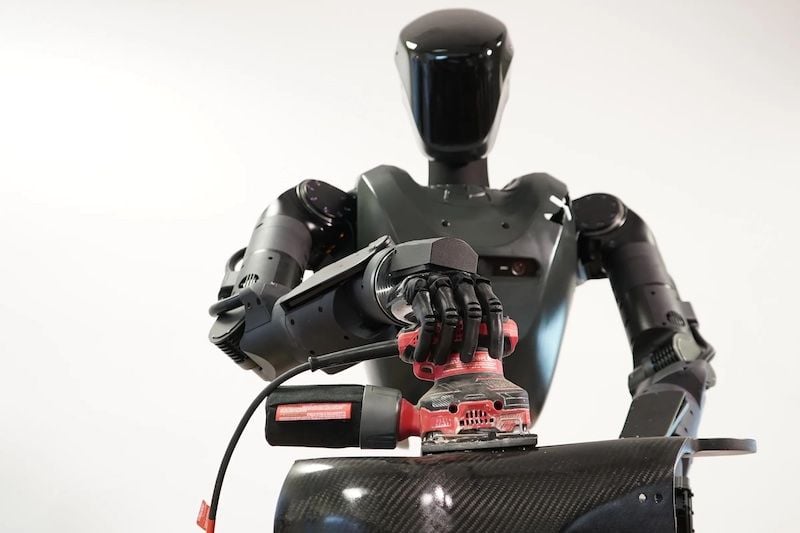
1. Alex (Boardwalk Robotics)
Boardwalk Robotics has prioritized practicality with its latest addition to the humanoid field, Alex. Alex is designed without legs because the company believes this is more cost-effective and many tasks don’t require a robot to be mobile. As a result, Alex possesses 19 degrees of freedom, versatile wrists and a 22-pound payload capacity, making it ideal for tasks like sorting items, cleaning products and fulfilling other maintenance duties. The robot has already shown off its potential by completing different household chores.

2. Alter 3 (Osaka University and MIXI)
Dubbed Alter 3, the latest humanoid robot from Osaka University and MIXI is powered by an artificial neural network and has an ear for music. Earlier iterations of Alter sang in an opera. Alter 3, which has enhanced sensors and improved expressive ability and vocalization system for singing, went even further in 2020 by conducting an orchestra at the New National Theater in Tokyo and taking part in other live performances.
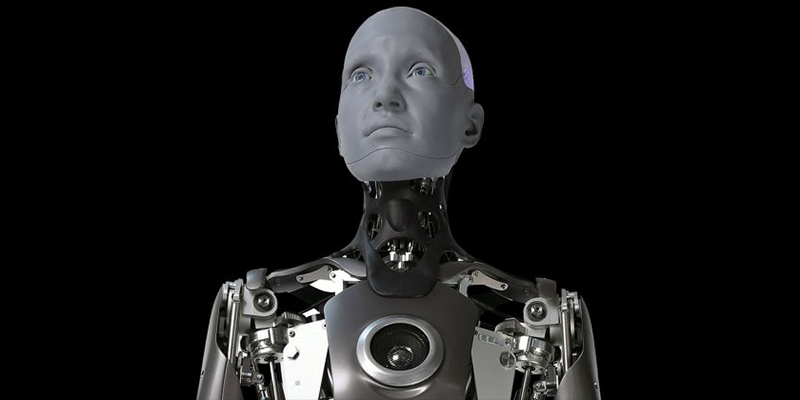
3. Ameca (Engineered Arts)
Engineered Arts’ latest and most advanced humanoid robot is Ameca, which the company bills as a development platform where AI and machine learning systems can be tested. Featuring sensors that can track movement across the entirety of a room, along with face and multiple voice recognition capabilities, Ameca naturally interacts with humans, detects emotions and communicates common expressions and gestures. The hope is that Ameca can apply these skills in settings like schools and elder care facilities.

4. Apollo (Apptronik)
Apptronik’s Apollo can carry up to 55 pounds and is designed to function in plants and warehouses and may expand into industries like retail and construction. An impact zone allows the robot to stop its motion when detecting nearby moving objects while swappable batteries that last four hours each keep Apollo productive. In 2024, Apptronik partnered with Mercedes-Benz to explore how Apollo can automate various manual tasks. And the company is primed to expand its production of Apollo, thanks to a $350 million funding round.
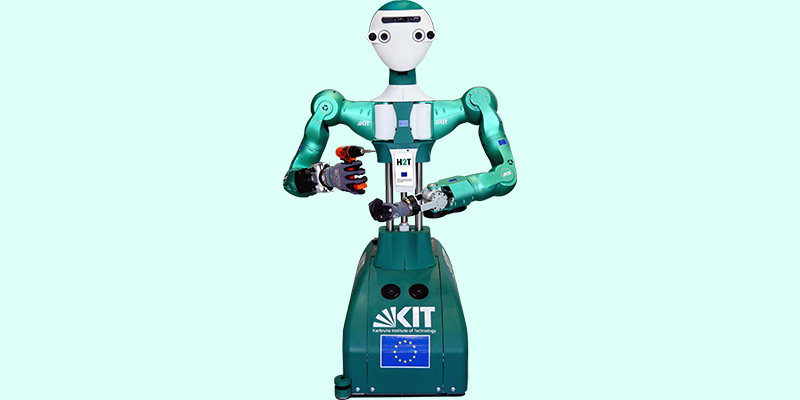
5. ARMAR-6 (Karlsruhe Institute of Technology)
ARMAR-6 is a humanoid robot developed by researchers at the Karlsruhe Institute of Technology in Germany to work in industrial settings. Capable of using drills, hammers and other tools, ARMAR-6 also features AI technology allowing it to learn how to grasp objects and hand them to human co-workers. It’s also able to take on maintenance duties like wiping down surfaces, and it even has the ability to ask for help when needed.
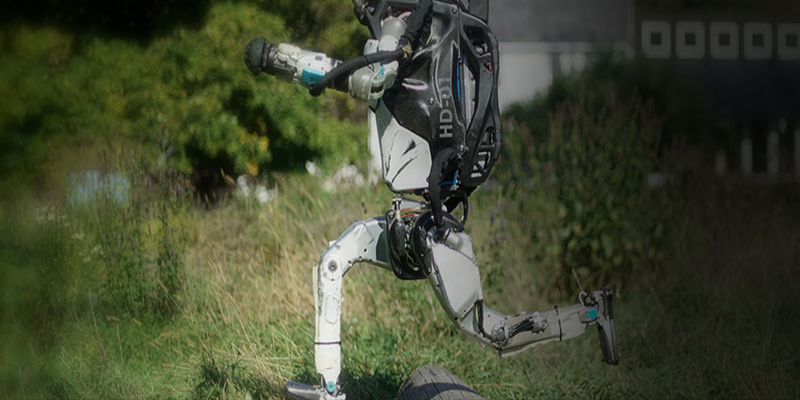
6. Atlas (Boston Dynamics)
Atlas is a leaping, backflipping humanoid robot designed by Boston Dynamics that uses depth sensors for real-time perception and model-predictive control technology to improve motion. Built with 3D-printed parts, Atlas is used by company roboticists as a research and design tool to increase human-like agility and coordination. Boston Dynamics’ newest electric version of Atlas has shown much promise, and the company plans to improve the robot’s reinforcement learning through a partnership with the Robotics & AI Institute.
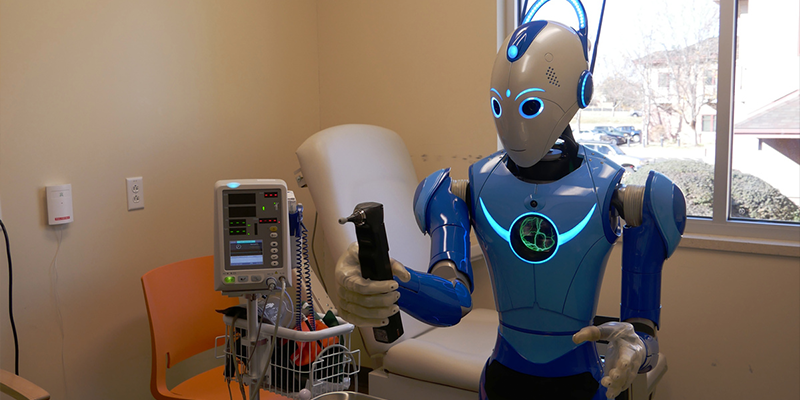
7. Beomni (Beyond Imagination)
Beomni is controlled remotely by “human pilots” donning virtual reality headsets and other wearable devices like gloves, while AI helps Beomni learn tasks so one day it can become autonomous. In 2022, Beyond Imagination CEO and co-founder Harry Kloor told Built In that he’s hopeful Beomni will transform the care older adults receive, while taking over more tedious and dangerous jobs in other industries. The company has built up more momentum through partnerships with Dreamtech and Cobotic Surgical, Inc.

8. CyberOne (Xiaomi)
CyberOne is Xiaomi’s first humanoid robot and is the latest addition to its robotics lineup, which already includes a Cyberdog. CyberOne was developed with proprietary software, algorithms and hardware components, which control its multi-directional arms and legs. The system is capable of bipedal motions and can also detect human emotions with its vision capabilities. Although CyberOne remains a research project, Xiaomi envisions a world where the technology will be used across industrial, service and companion robotics.
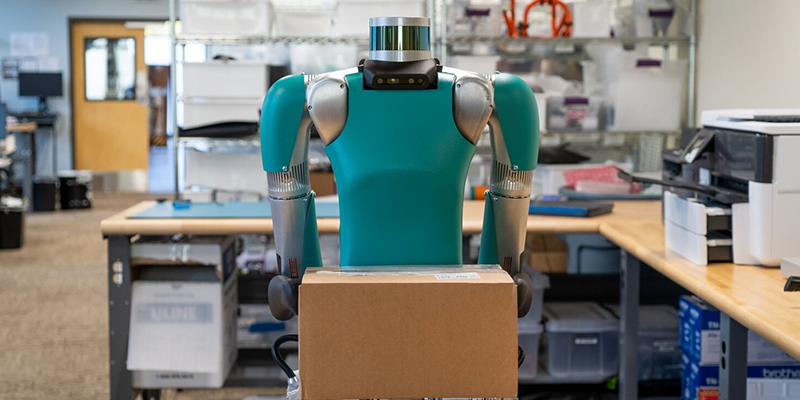
9. Digit (Agility Robotics)
Built by Agility Robotics, Digit is poised to take on even more tedious tasks. With fully functioning limbs, the robot is able to crouch and squat to pick up objects, adjusting its center of gravity depending on size and weight, while surface plane-reading sensors help it find the most efficient path and circumvent whatever’s in its way. Upon deploying a small fleet of Digit robots at a GXO facility, Agility Robotics has ramped up its production of Digit robots and wants to raise an additional $150 million in funding.
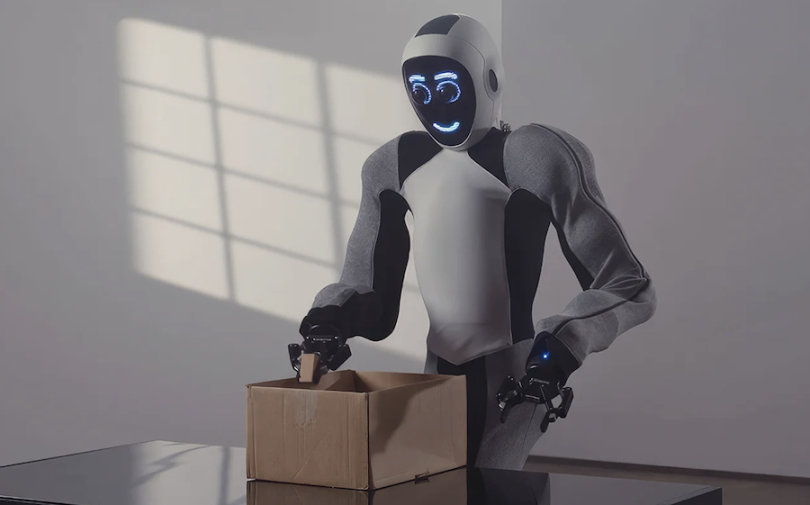
10. EVE (1X)
1X claims the title of being the company to send the first AI-powered humanoid robot into the workforce. The company’s robot EVE comes with strong grippers for hands, cameras that support panoramic vision and two wheels for mobility. A voice command feature also lets users ask EVE to perform multiple tasks in sequence. Most importantly, EVE uses AI to learn new tasks and improve based on past experiences. With these abilities, EVE is on pace to spread into industries like retail and logistics.

11. Figure 03 (Figure)
Figure’s humanoid robot, Figure 03, is designed to function effectively in home environments while maintaining an appealing aesthetic. The latest model features wireless charging and upgraded visuomotor controls, which deliver higher frame rates and lower latency. It also includes embedded palm cameras, enabling the robot to handle delicate objects with precision. Through its Helix platform, Figure 03 benefits from several AI updates, including an enhanced reasoning system for completing complex tasks. Beyond these technical improvements, the redesign also supports mass manufacturing, helping the company reduce production costs.
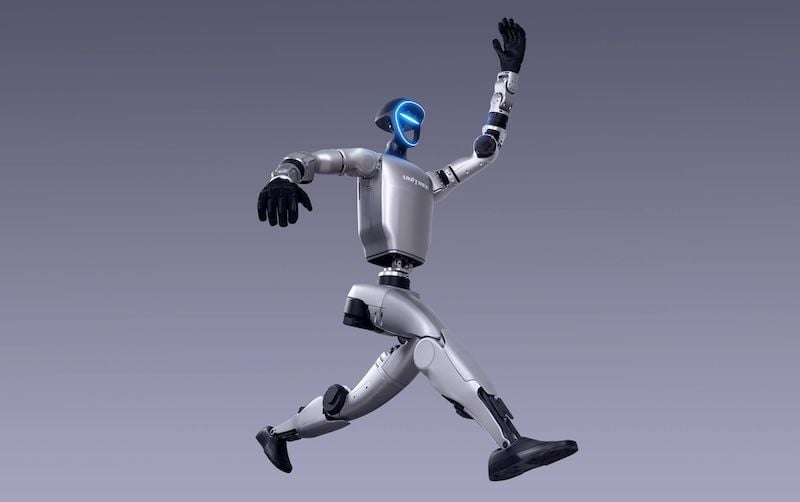
12. G1 (Unitree)
Unitree has taken major strides in further developing its G1 humanoid robot. With up to 43 joint motors and dexterous hands with force control, G1 has the flexibility and motor skills to perform a range of tasks. The robot also uses reinforcement learning to continually learn and improve its performance. As a result, G1 has demonstrated impressive agility and could be used in areas like elderly care in China.
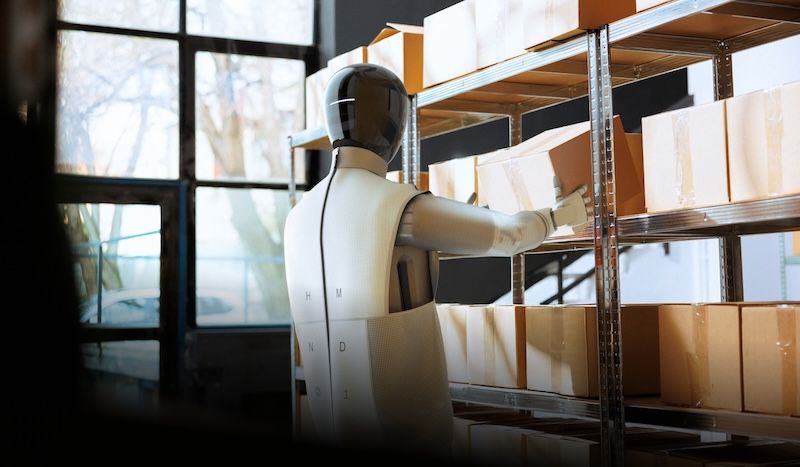
13. HMND 01 (Humanoid)
London-based Humanoid has released its HMND 01 robot, which is equipped with hands that can move faster than humans. HMND 01 features 41 degrees of freedom, carries up to 33 pounds at a time and runs for up to four hours on average. The robot also demonstrates advanced motor control and hand-eye coordination. Referred to as Humanoid’s “next-gen labour automation unit,” HMND 01 is designed to operate across various industrial settings.

14. Jiajia (University of Science and Technology of China)
Developed by researchers from the University of Science and Technology of China, Jiajia is the first humanoid robot to come out of China. Researchers spent three years developing Jiajia. Chen Xiaoping, who led the team behind the humanoid robot, told reporters during Jiajia’s 2016 unveiling that he and his team would soon work to make Jiajia capable of crying and laughing, the Independent reports. According to Mashable, its human-like appearance was modeled after five students from USTC.
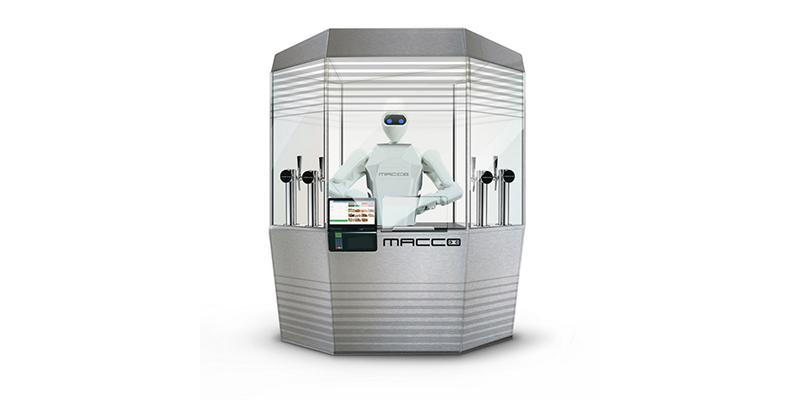
15. KIME (Macco Robotics)
KIME, Macco Robotics’ humanoid robotic bartender, serves beer, coffee, wine, snacks, salads and more. Each KIME kiosk is able to dispense 253 items per hour and features a touchscreen and app-enabled ordering, plus a built-in payment system. Though unable to dispense the sage advice of a seasoned bartender, KIME is able to recognize its regular customers and pour two beers every six seconds. In addition to being a bartender, the robot could also serve as chef, assistant and waiter, among other positions.

16. Nadine (Nanyang Technological University)
Researchers from Nanyang Technological University in Singapore developed Nadine, a humanoid social robot, with realistic skin, hair, facial expressions and upper body movements that’s able to work in a variety of settings. According to researchers, Nadine can recognize faces, speech, gestures and objects. It even features an affective system that models Nadine’s personality, emotions and mood. So far, Nadine has worked in customer service, led a bingo game and could take on a bigger role as a companion robot in care homes.
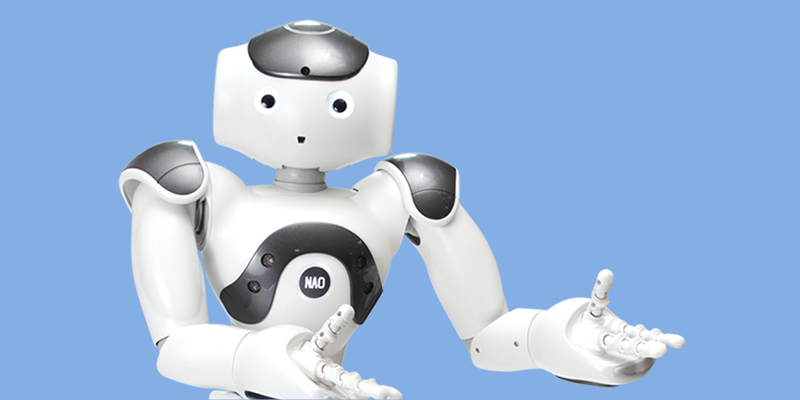
17. NAO (Softbank Robotics)
Softbank Robotics’ first humanoid robot, NAO, works as an assistant for organizations in industries ranging from healthcare to education. Only two feet tall, NAO features two 2D cameras for object recognition as well as four directional microphones and speakers, plus seven touch sensors, to better interact with people and its surrounding environment. With the ability to converse in 20 languages, NAO helps create content and teach programming in classrooms and works as assistants and patient service representatives in healthcare settings.
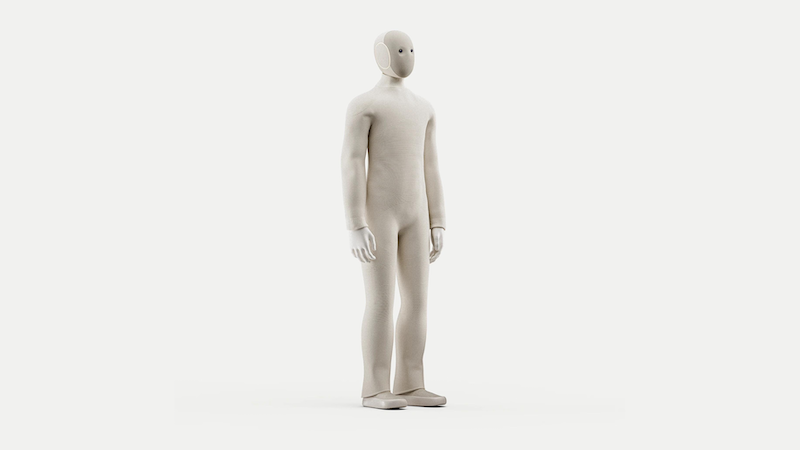
18. Neo (1X)
NEO is the latest humanoid robot from 1X, a Silicon Valley-based startup. NEO is poised to be one of the first widely accessible humanoids on the market, as the company has already opened preorders and set an initial price of $20,000, or $499 monthly subscription. Scheduled to ship in 2026, NEO aims to automate household chores and provide personalized assistance thanks to the AI neural network that powers the machine. However, the initial shipment of the robot will still rely on human operators to complete simple tasks. According to the Wall Street Journal, this process will help further train the humanoid to operate fully autonomously.
To give customers as much privacy and control as possible, 1X stated that NEO’s cameras will blur out people’s faces, and that the system will operate with a human controller only during scheduled times. In addition, owners can create no-go zones where NEO and human operators cannot enter.
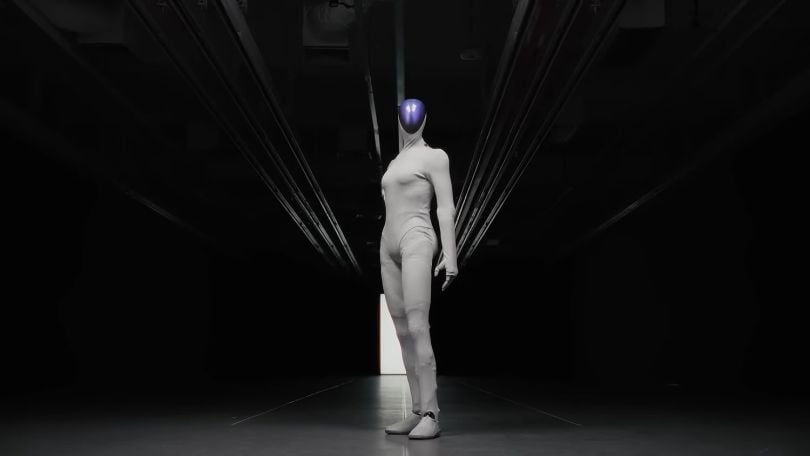
19. Next-Gen IRON (XPENG)
Next-Gen IRON is an anthropomorphic humanoid robot developed by electric vehicle manufacturer XPENG. The robot features a human-like spine, bionic muscles and 82 degrees of freedom to achieve natural, graceful movements and high-difficulty actions like a catwalk gait. Equipped with three Turing AI chips and XPENG’s first-generation physical world large model, the Next-Gen IRON robot aims to deliver high-order intelligence in “conversation, walking and interaction,” and is intended for commercial scenarios such as guided tours, shopping guides, traffic diversion or industrial inspection tasks.
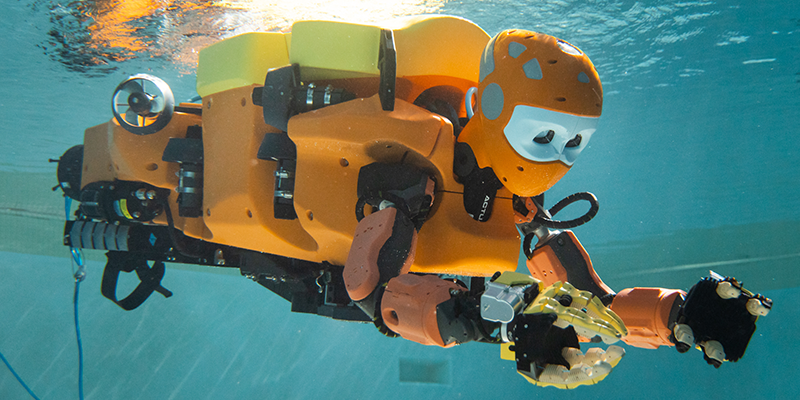
20. OceanOne (Stanford Robotics Lab)
A diving humanoid robot, OceanOne, from the Stanford Robotics Lab is exploring shipwrecks. In 2016, in its maiden voyage, OceanOne ventured to the Mediterranean Sea off the coast of France to explore the wreckage of La Lune, one of King Louis XIV’s ships that was sunk in 1664. In its latest iteration, OceanOneK, the robot can dive even deeper, reaching depths of 1,000 meters. Featuring haptic feedback and AI, OceanOneK can operate tools and other equipment, and has already explored underwater wreckage of planes and ships.

21. Optimus (Tesla)
Optimus is Tesla’s long-anticipated humanoid robot. First teased in 2021 with a dancer dressed in a bodysuit, the company has made steady advances to realize its humanoid vision. Its current model, Optimus Gen 2, can walk in straight lines, balance on one leg, lift objects, recognize different environments and traverse uneven terrains. Powering its hardware is a central computer that relies on AI, deep learning and computer vision. While there is no exact release date, Tesla CEO Elon Musk plans to begin production of Optimus units in 2025, contingent on securing a rare earth metals contract with the Chinese government. Ultimately, Musk plans to have millions of units by 2029 operating in Tesla factories.
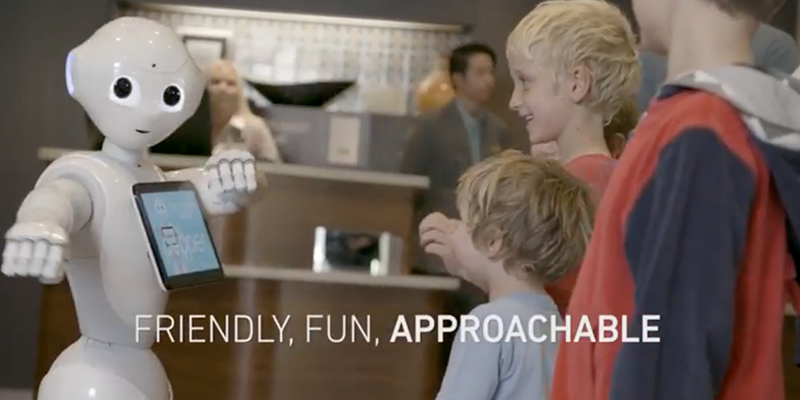
22. Pepper (Softbank Robotics)
Pepper is another humanoid robot from Softbank Robotics working in classrooms and healthcare settings. But unlike NAO, Pepper is able to recognize faces and track human emotions. Pepper has worked as a hotel concierge and has been used to monitor contactless care and communication for older adults during the pandemic. More recently, it was introduced at a Dayton facility as a social support robot for individuals with intellectual disabilities.
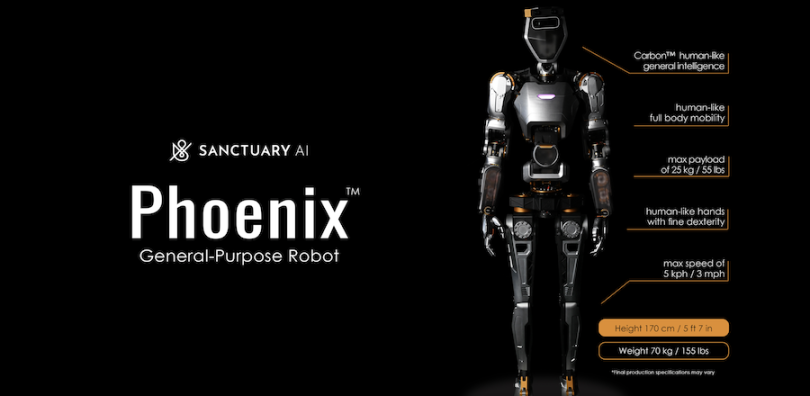
23. Phoenix (Sanctuary AI)
Sanctuary AI continues to build on the progress of its humanoid products with the seventh generation of Phoenix. This version of Phoenix is designed with improved capabilities, most notably the ability to learn tasks faster than its predecessors. Because of this advanced intelligence, Sanctuary AI has secured partnerships with companies like Magna International Inc. and Microsoft. The introduction of in-hand manipulation also promises to broaden the kinds of use cases Phoenix can fill.
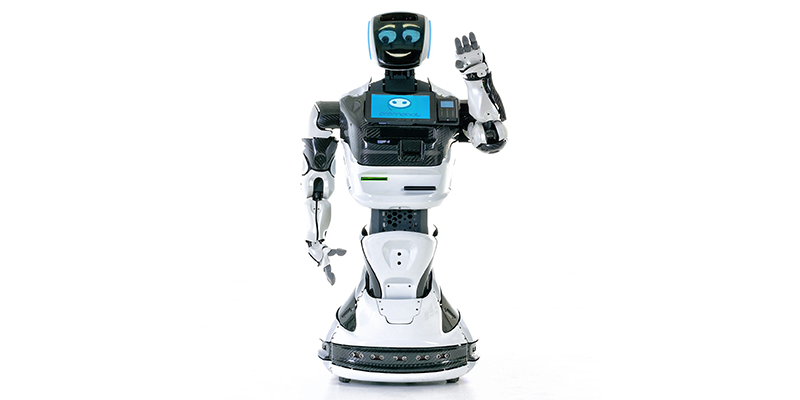
24. Promobot (Promobot)
Promobot is a customizable humanoid robot that’s capable of working in a range of service-oriented roles. Equipped with facial recognition and chat functions, Promobot can issue keycards, scan and auto-fill documents, and print guest passes and receipts. As a concierge, Promobot integrates with a building’s security system and is able to recognize the faces of a building’s residents. At hotels, it can check guests in, and in healthcare settings, Promobot is able to measure key health indicators like blood sugar and blood oxygen levels.
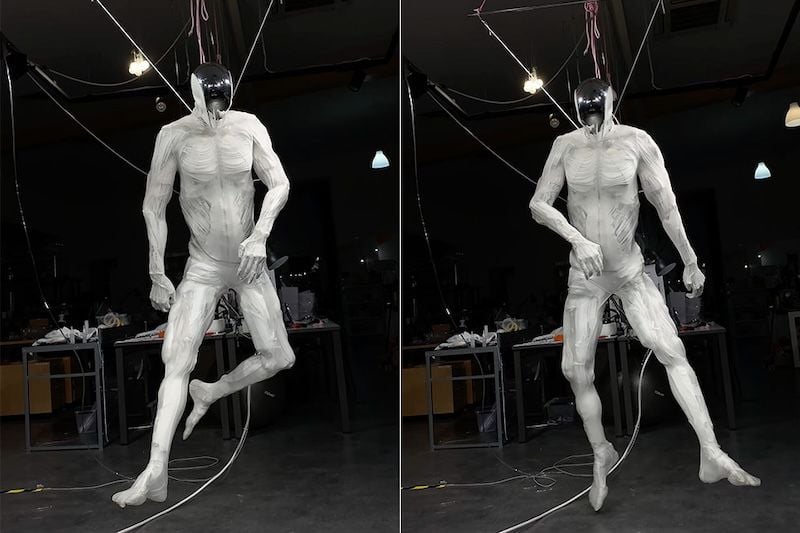
25. Protoclone (Clone Robotics)
The Protoclone is an eerie addition to a growing list of humanoid robots. Designed by Clone Robotics using its Myofiber technology, the robot consists of more than 1,000 synthetic muscles that mimic the function of 206 human bones. In a video demonstration, Clone Robotics shows the Protoclone flexing its leg muscles in a human-like manner as it dangles mid-air. The goal is to eventually have this robot complete tasks like prepping meals and doing laundry.
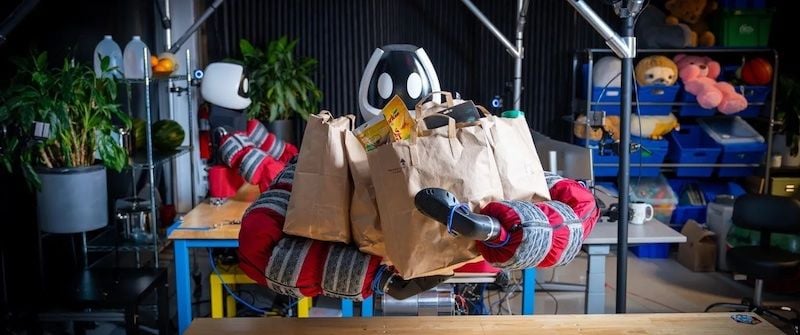
26. Punyo (Toyota)
Punyo is the latest humanoid robot to be produced by the Toyota Research Institute. The Japanese word “punyo” has associations of cuteness and resilience, and Punyo embodies these traits in its squishy appearance. However, Punyo takes a different approach to lifting objects compared to other humanoids. Instead of using just its hands, Punyo leverages its arms and chest to handle hefty loads in a more natural way.
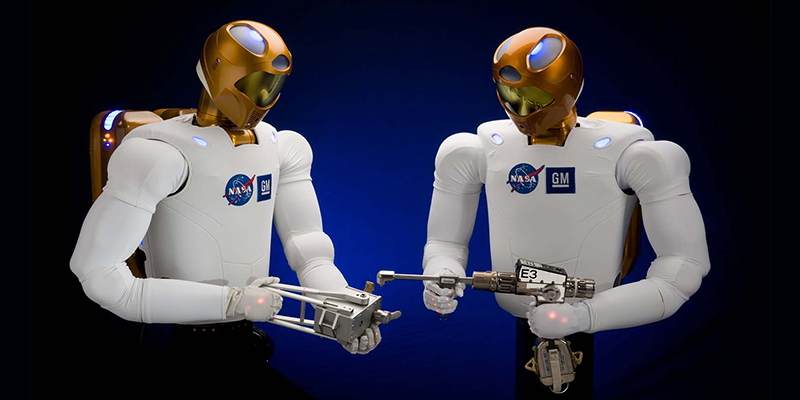
27. Robonaut 2 (NASA and General Motors)
Developed by NASA and General Motors, Robonaut 2 is a humanoid robot that works alongside human counterparts in space and on the factory floor. More than a decade ago, Robonaut 2 became the first humanoid robot to enter space, and worked as an assistant on the International Space Station until 2018, when it returned to Earth for repairs. Today, Robonaut 2 is inspiring other innovations and advancements in robotics, like the RoboGlove and Aquanaut from the ocean robotics company Nauticus.
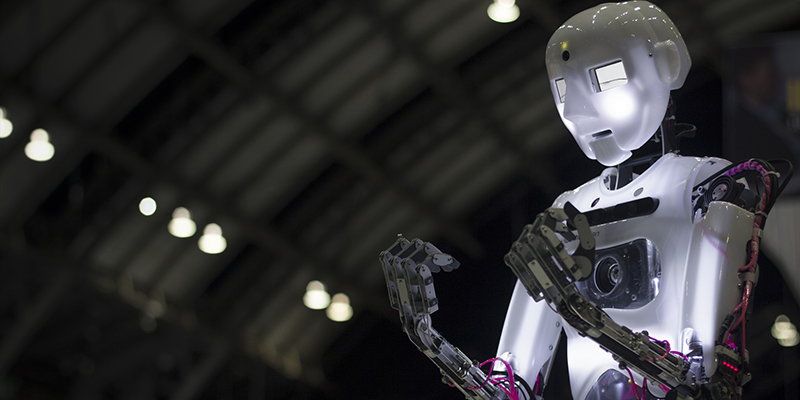
28. RoboThespian (Engineered Arts)
Another humanoid robot from Engineered Arts is RoboThespian, which features telepresence software that allows humans to remotely talk through the robot. With automated eye contact and micro-facial expressions, RoboThespian is able to perform for crowds and work in places like the Kennedy Space Center where it answers questions about the Hubble Telescope from curious visitors.
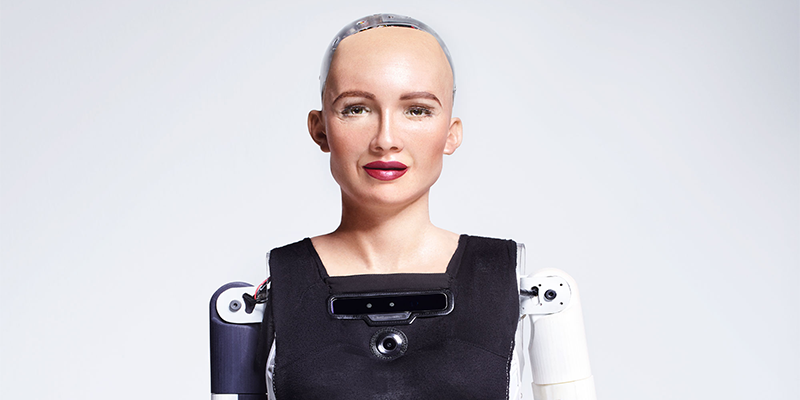
29. Sophia (Hanson Robotics)
Hanson Robotics’ AI-powered humanoid robot Sophia has traveled the world, graced the cover of Cosmopolitan Magazine, made multiple appearances on The Tonight Show and addressed the United Nations. One of the more widely known humanoid robots, Sophia can process visual, emotional and conversational data to better interact with humans. More recently, Sophia made an appearance at an innovation fair in Zimbabwe.
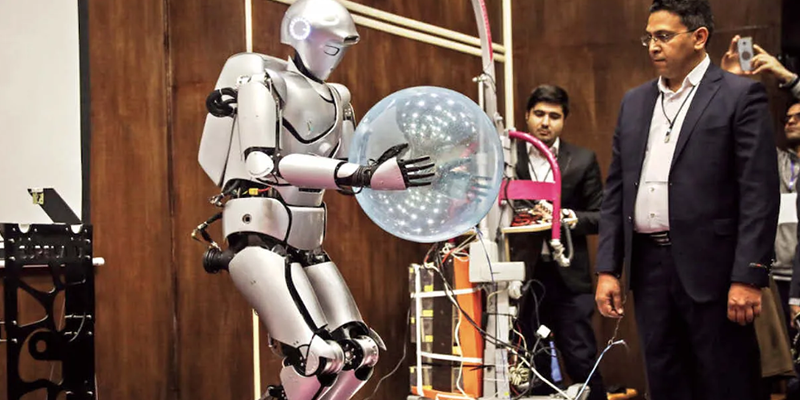
30. Surena IV (University of Tehran)
Able to grab a water bottle, pose for a selfie and write its own name on a whiteboard, Surena IV is the latest humanoid robot from the University of Tehran. IEEE Spectrum reports that Surena IV has improved tracking capabilities and hands that allow it to use power tools. It’s also able to adjust the angle and position of its feet, giving it an improved ability to navigate uneven terrain.

31. Tiangong Ultra (X-Humanoid)
Tiangong is perhaps the first humanoid robot to win a half-marathon race. Developed by Chinese startup X-Humanoid, Tiangong Ultra can navigate various terrains at a steady pace, and can also perform other tasks, including grabbing items with its articulating arms. According to the company, the system is powered by memory-based predictive reinforcement imitation learning, a method that combines several machine learning techniques to instantly predict outcomes.
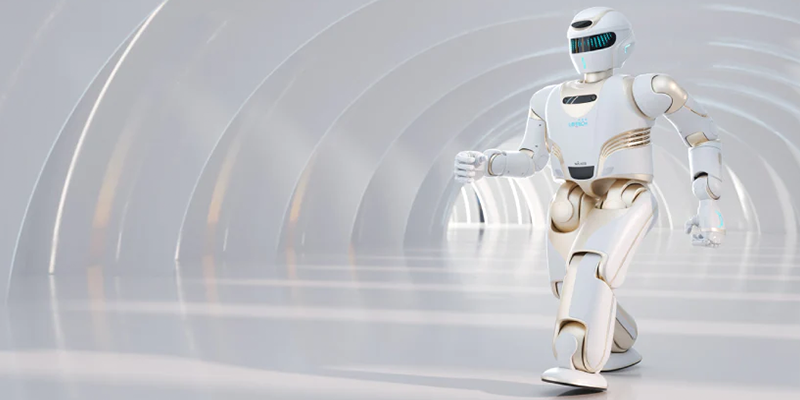
32. Walker (UBTECH Robotics)
With improved hand-eye coordination and autonomous navigation, Walker, a humanoid service robot by UBTECH Robotics, is able to safely climb stairs and balance on one leg. UBTECH has since branched out to design an industrial version of Walker as well. Known as Walker S, this newer robot displays more sound balance, perception and motor skills to handle industrial tasks like tightening bolts, assembling parts and sorting products. These improvements come as UBTECH prepares to launch a new wave of humanoid robots.
Frequently Asked Questions
What are humanoid robots?
Humanoid robots look like humans and mimic human motions and actions to perform various tasks. Some humanoid robots even use materials that resemble human features, like skin and eyes, to appear friendlier.
What are humanoid robots used for?
Humanoid robots are often used for customer service roles, including concierges, bartenders and greeters. Because of their human shape, humanoid robots can also assist with handling and carrying materials in warehouses and factories.
What is the most advanced humanoid robot today?
Ameca by Engineered Arts is considered one of the most advanced humanoid robots. The robot uses artificial intelligence and life-like facial expressions to navigate complex robot-human interactions, setting it apart from many of its humanoid counterparts.
How much do humanoid robots cost?
Humanoid robot pricing varies widely, ranging from as low as $16,000 to hundreds of thousands of dollars.




